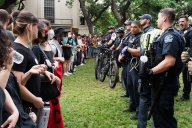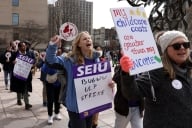You have /5 articles left.
Sign up for a free account or log in.
S&P Global Ratings dropped outlooks on more than a quarter of the colleges and universities it rates because of the COVID-19 pandemic’s effects on higher education.
The ratings agency cut ratings on 117 colleges -- 84 private institutions and 33 public institutions -- from stable to negative. It changed outlooks for 10 more -- seven private and three public -- from positive to stable. And it left unchanged outlooks for 50 institutions that were already negative.
Those actions mean the share of colleges and universities that S&P rates with negative outlooks has more than quadrupled in just a few months. At the end of 2019, just 9.2 percent of its rated higher ed universe had negative outlooks. After the actions announced today, 38 percent does. The agency maintains public ratings on 436 public and private colleges and universities.
A negative outlook for a college or university means S&P sees at least a one-in-three chance operating and economic conditions will significantly affect the institution’s credit characteristics.
Institutions with newly changed outlooks tend to be those with lower bond ratings, those with less financial flexibility and those with a more difficult market position than others, according to S&P. The ratings agency weighed liquidity most heavily in its assessment but also considered aspects of credit profiles including draw, selectivity, matriculation rates, operating margins, revenue diversity and, for public institutions, state funding.
“While S&P Global Ratings' outlook on the U.S. not-for-profit higher education sector has been negative for three consecutive years now, we believe that the COVID-19 pandemic and related economic and financial impacts exacerbate pressures already facing colleges and universities,” a news release from S&P said. “The financial impact on institutions from the loss of auxiliary revenue from housing and dining fees, and parking fees; as well as revenues from athletics, theater, and other events, is material for many.”
Although the federal stimulus package provided some relief to colleges and universities, the ratings agency still expects stressed operating budgets. The extent of the stress depends on yet-to-be determined factors like the length of the pandemic, enrollment figures and how instruction is delivered come fall.
“We expect that the colleges and universities we rate will face an unprecedented level of operating stress and tightened liquidity, which will worsen the longer and deeper the pandemic lasts,” the S&P news release said.
Many institutions that the agency rates are expected to be able to absorb some of the pandemic’s impacts because they have built up strong reserves and balance sheets against relatively low debt levels. But if global travel restrictions stay in place and international and domestic enrollment falls, serious operational pressures will result.
“Students who are partially through academic courses have a strong motivation to return once campuses reopen,” the S&P release said. “This means revenues are deferred rather than lost forever. If, on the other hand, the duration of virtual teaching extends into 2021, we expect the financial damage will be more severe and the pressure on credit ratings will grow.”
At the end of last year, only 3.2 percent of S&P-rated colleges and universities had been assigned positive outlooks. All of those have now been revised to stable, because the agency’s experts believe positive momentum is likely to be stunted by the pandemic and accompanying economic collapse.








